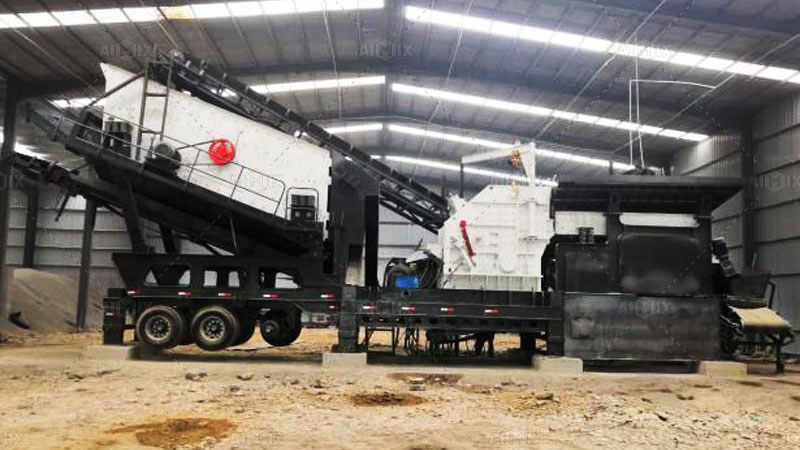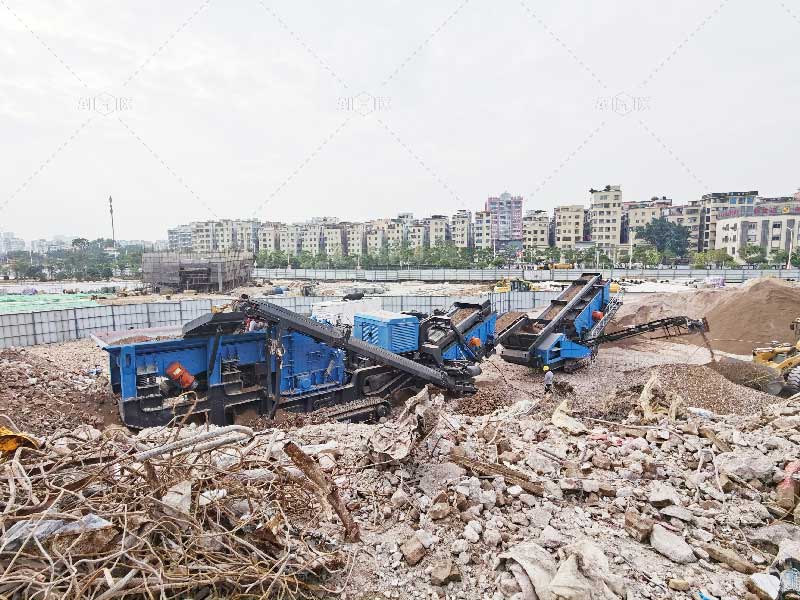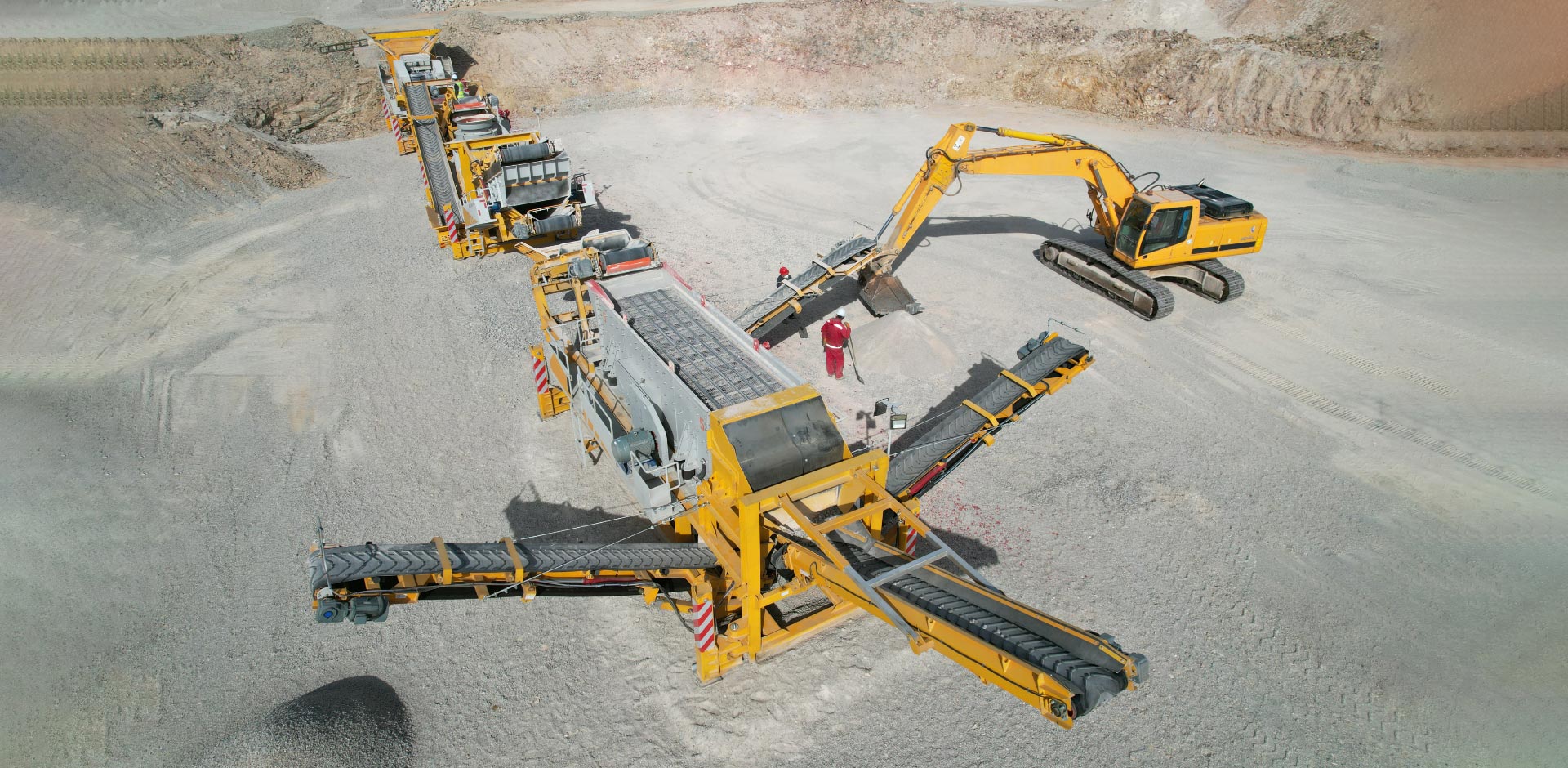Stone crusher plants play a pivotal role in the construction and mining industries by turning raw materials into essential aggregates for building roads, bridges, and other infrastructure. The quality and type of raw materials used in these plants significantly influence the final products’ durability and effectiveness. But where do stone crusher plants get their raw materials from? In this article, we will explore the sources of raw materials for stone crusher plants, focusing on mobile stone crusher plants and aggregate crusher plants.
Natural Sources of Raw Materials for Stone Crusher Plants
The primary raw materials for stone crusher plants(planta trituradora) come from natural sources found in quarries and mines. These raw materials consist mainly of rocks such as granite, limestone, basalt, and sandstone. Let’s look at the different natural sources that contribute to the materials used in a stone crusher plant.
1. Quarries
Quarries are one of the most common sources of raw materials for stone crusher plants. They are large excavated areas where various types of rocks are extracted. These quarries are often rich in natural stones, which are then transported to crusher plants for processing. Rocks from quarries like granite and limestone are processed into aggregates used in construction.
2. Riverbeds and Sand Pits
Another important natural source is riverbeds, where materials like sand and gravel are extracted. These materials are often used in the production of construction aggregates. In some cases, the raw materials obtained from riverbeds are sent to stone crusher plants, where they are crushed into smaller pieces for various construction applications.

How Mobile Stone Crusher Plants Source Raw Materials
Mobile stone crusher plants are known for their flexibility and ability to be transported to different sites, making them ideal for projects that require on-site material processing. These plants can source raw materials directly from quarries, riverbeds, or other local sites. The key benefit is that they can be moved quickly to locations where raw materials are abundant.
1. On-Site Material Extraction
Mobile stone crusher plants are often set up in quarries or mining areas where raw materials are plentiful. Once the raw materials are extracted, they are processed immediately on-site, saving time and costs associated with transporting the materials to a stationary plant. This on-site processing makes mobile stone crushers(planta de trituracion movil) highly efficient for short-term projects or those in remote locations.
2. Local Resource Availability
Mobile stone crusher plants thrive in areas where there is easy access to local resources. In some cases, construction sites or new urban developments may contain surplus material that can be used in the crushing process. Mobile crushers can be easily transported to these locations and turn surplus materials into valuable aggregates for immediate use in construction projects.

How Aggregate Crusher Plants Source Raw Materials
Aggregate crusher plants are a type of stone crusher plant specifically designed to process large volumes of materials into smaller aggregates. These plants often rely on a variety of raw material sources to meet the high demand for construction aggregates.
1. Aggregates from Different Sources
Aggregate crusher plants can process a wide range of raw materials. The most common raw materials used include crushed rock from quarries, sand from riverbeds, and recycled concrete. These plants source raw materials from local quarries, gravel pits, and construction and demolition sites where surplus concrete can be repurposed for future use.
2. Industrial Mining Operations
In some cases, aggregate crusher plants(planta trituradora de agregados) source raw materials from industrial mining operations. Mines that specialize in extracting metals, minerals, and other natural resources often generate large quantities of crushed stone or gravel as a byproduct. These materials are then sent to aggregate crusher plants, where they are refined into high-quality aggregates used for construction.
The Role of Transportation in Sourcing Raw Materials
Transportation plays a crucial role in sourcing raw materials for stone crusher plants. Whether it’s a mobile stone crusher plant or a stationary aggregate crusher plant from AIMIX Group, the ability to transport raw materials efficiently affects the overall cost-effectiveness and operation of the plant.
1. Direct Transportation from Quarries and Mines
Raw materials are often transported directly from quarries and mines to stone crusher plants. This requires well-established transportation networks and logistics to ensure the timely delivery of materials. Trucks and conveyor belts are commonly used for transporting the extracted materials.
2. Use of Mobile Plants for Remote Areas
For areas where transportation infrastructure may not be as developed, mobile stone crusher plants can be set up directly at the extraction sites. This minimizes the need for transporting raw materials and makes it easier to access difficult-to-reach areas. It also reduces the carbon footprint associated with long-distance material transport.
Conclusion
Stone crusher plants rely on various sources of raw materials, ranging from quarries and riverbeds to industrial mining operations. Whether it’s a mobile stone crusher plant or an aggregate crusher plant, these raw materials are crucial for producing high-quality aggregates used in construction. Understanding where these materials come from helps ensure that the right resources are utilized, and the processing plants remain efficient and sustainable. By sourcing materials directly from the extraction sites or local sources, stone crusher plants can significantly reduce transportation costs and time, making them more efficient and effective for construction projects.

